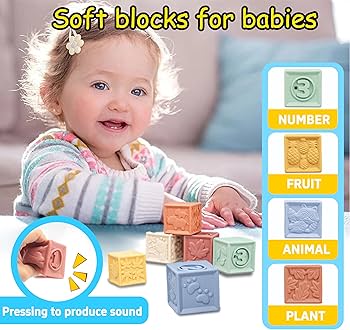Creating DIY baby toys is a wonderful way to engage with your little one while ensuring they have safe, stimulating toys to play with. From simple projects using household items to more complex crafts, this guide will help you explore easy and fun DIY baby toys that cater to different developmental stages.

Why Create DIY Baby Toys?
Crafting DIY baby toys not only saves money but also provides a unique opportunity to make personalized items that suit your child’s development. It’s also a fun bonding experience for parents and babies. Let’s explore some easy and creative toy ideas for various ages!
Simple Toys for Newborns (0-3 Months)
- High-Contrast Visual Toys: For newborns, high-contrast designs are perfect for stimulating their vision. You can make simple toys with black-and-white patterns using fabric or cardboard.
- Crinkle Sensory Toy: Babies love the sound of crinkling materials. A soft, fabric-covered toy filled with crinkly material (such as from snack bags) can provide a satisfying sensory experience.
Fun Toy Ideas for Babies Aged 3-6 Months
- Tissue Box Toy: Fill a small tissue box with colorful, soft fabric or paper. Babies enjoy pulling out materials and exploring new textures. It’s a simple, interactive play idea.
- Hanging Play Gym Toys: Create safe hanging toys using soft fabric. These can be attached to a baby gym and stimulate both visual and tactile senses.
Engaging Playthings for Babies Aged 6-12 Months
- Teething Toys: Use food-safe silicone or untreated wooden beads to make safe teething toys. These options are gentle on gums and offer a soothing effect for babies.
- Soft Baby Dolls: Handmade dolls are great for cuddling. Sew simple fabric dolls that your baby can hold or carry, providing comfort and companionship.
Creative Toy Ideas for Older Infants (1 Year and Beyond)
- Toy Storage Box: Craft a sturdy wooden box for storing toys. Personalize it by adding fun colors or decals to make it a special item for your child’s room.
- Sensory Bags: Fill sealed plastic bags with rice, beads, or fabric pieces to create a sensory experience. These bags can engage a baby’s sense of touch and sound.
Safety Considerations for Homemade Baby Toys
When creating toys at home, safety is key. Here are a few important tips to keep in mind:
- Use Non-Toxic Materials: Make sure that all paints, fabrics, or other materials used in toys are non-toxic and safe for babies.
- Avoid Small Parts: Always check that toys are free from small parts that could become choking hazards.
- Test Durability: Ensure that all toys are securely constructed and can withstand handling, chewing, or pulling.
How to Make Safe, Fun Baby Toys at Home
Making your own toys is simple and rewarding. Here’s a guide to help you get started:
- Gather Materials: Use safe materials, such as soft fabric, untreated wood, and non-toxic paints, that are suitable for making toys at home.
- Follow Tutorials: Many online resources, including blogs and YouTube, provide step-by-step guides for creating homemade baby toys.
- Get Creative: Customize your toys to meet your baby’s developmental needs, adding fun textures, shapes, and colors.
Frequently Asked Questions About Homemade Baby Toys
1. What are the best homemade toys for infants?
Great options include high-contrast visual toys, crinkle toys made from fabric, and rattles made with safe materials. These stimulate sensory development and encourage early learning.
2. How can I make baby toys for a 3-month-old?
For 3-month-olds, try making a tissue box toy or a soft fabric book. These simple toys promote sensory exploration and are easy to make.
3. Are homemade toys safe for babies?
Yes, as long as they’re made with non-toxic materials and are free from small parts that could be a choking hazard. Always test toys for durability.
4. What materials should I use for homemade toys?
Use soft cotton, untreated wood, silicone, and felt for making toys. Avoid sharp edges and materials with harmful finishes.
5. How do I clean homemade baby toys?
You can wash fabric toys by hand or machine using mild soap. For non-fabric toys, use a water-vinegar solution to clean them. Let the toys dry completely before use.
6. What are some easy toys for a 6-month-old?
Some fun options include hanging toys, sensory balls, and simple teething toys. These can help your baby develop motor skills and encourage exploration.
7. Can I make toys from recycled materials?
Yes, you can repurpose items like cardboard, plastic bottles, and fabric scraps to create fun, eco-friendly toys. For example, use a plastic bottle filled with rice to make a rattle.
8. What are Montessori-inspired homemade toys?
Montessori-inspired toys focus on developing motor skills and independent play. Examples include stacking toys, fabric books, and sensory bins.
9. Can I make toys for older babies (12 months+)?
Yes! Consider making stacking toys, felt boards, or puzzles. These toys promote cognitive skills and motor development.
10. Where can I find tutorials to make homemade toys?
You can find plenty of online tutorials on Pinterest, YouTube, and parenting blogs. Many websites provide easy-to-follow guides and creative ideas for making baby toys.
Conclusion
Creating your own baby toys is a fantastic way to engage your child in safe, educational play. Homemade toys encourage development, creativity, and bonding time between you and your baby. Whether you’re crafting simple sensory items or teething toys, you can provide a fun and safe environment for your child to explore. So grab your materials, start crafting, and make unique toys that will become cherished keepsakes.
Discover Top Resources: A Curated List of Helpful Links For Your Little One
Ergonomic Baby Carriers: 7 Must-Know Benefits for Comfort and Support
Baby Food Makers: 10 Essential Benefits for Effortless Homemade Baby Food
Silicone Baby Bibs: 7 Amazing Benefits for Stress-Free Mealtimes
Stay Connected: Follow Us for the Latest Updates and Tips!